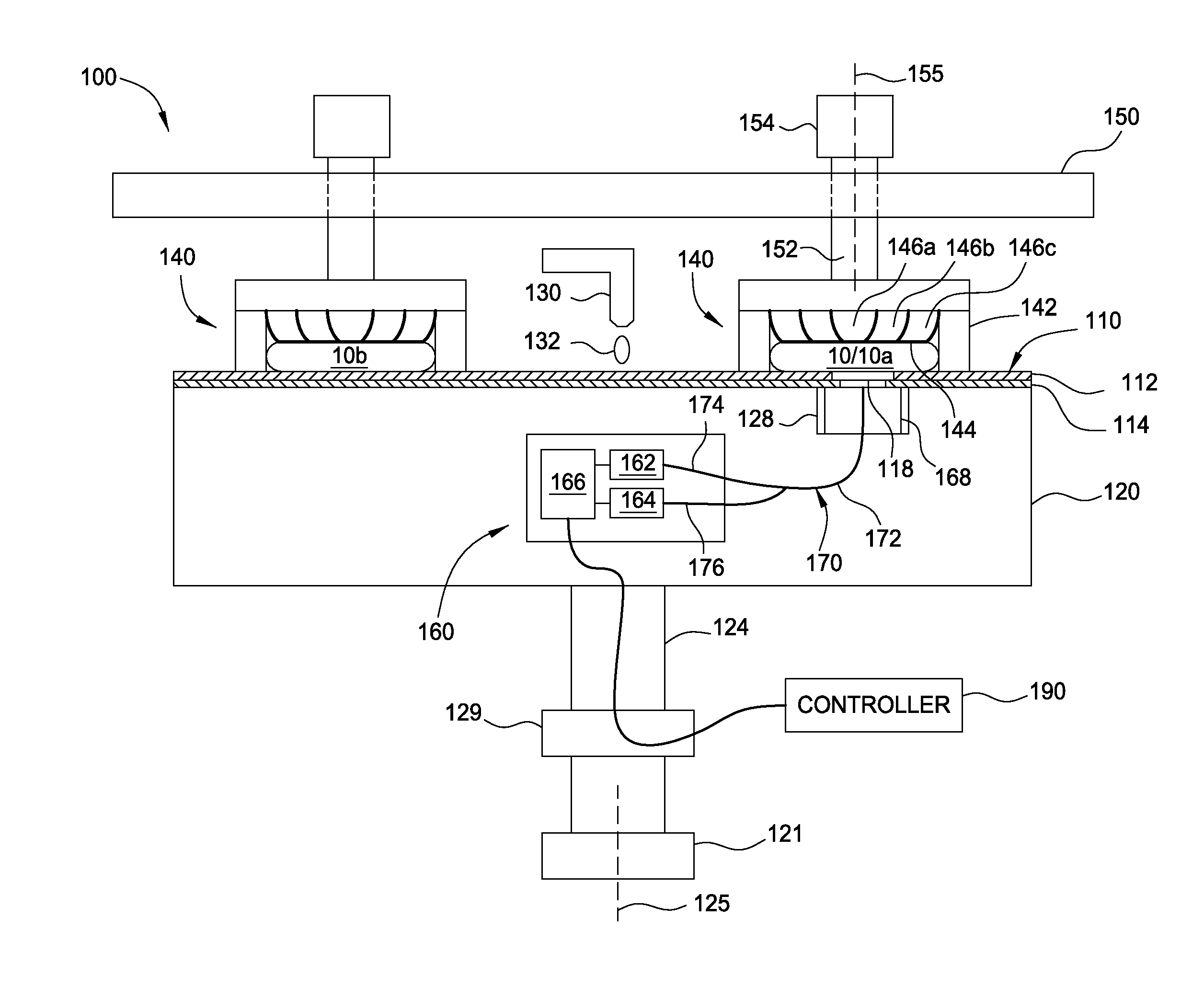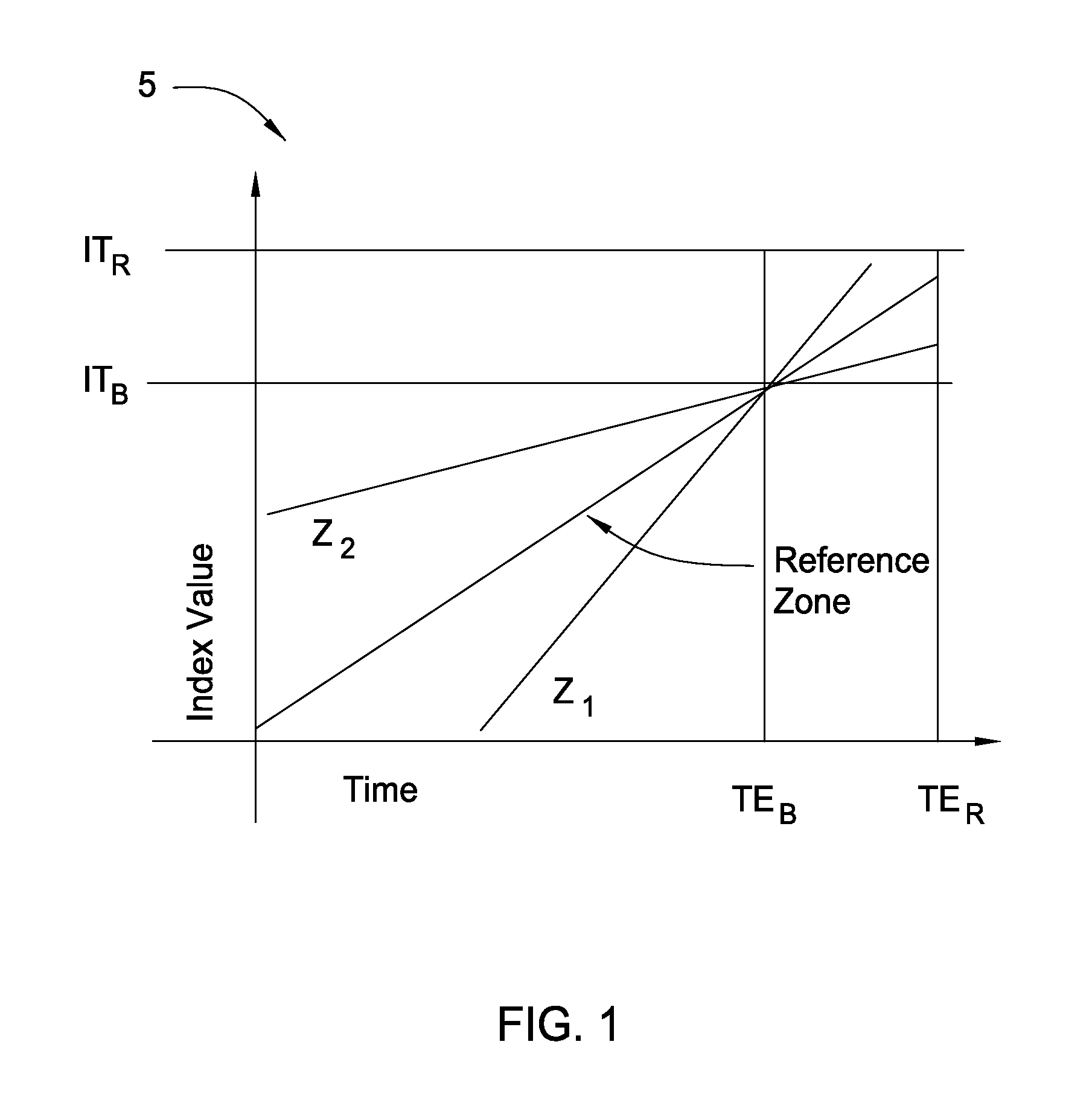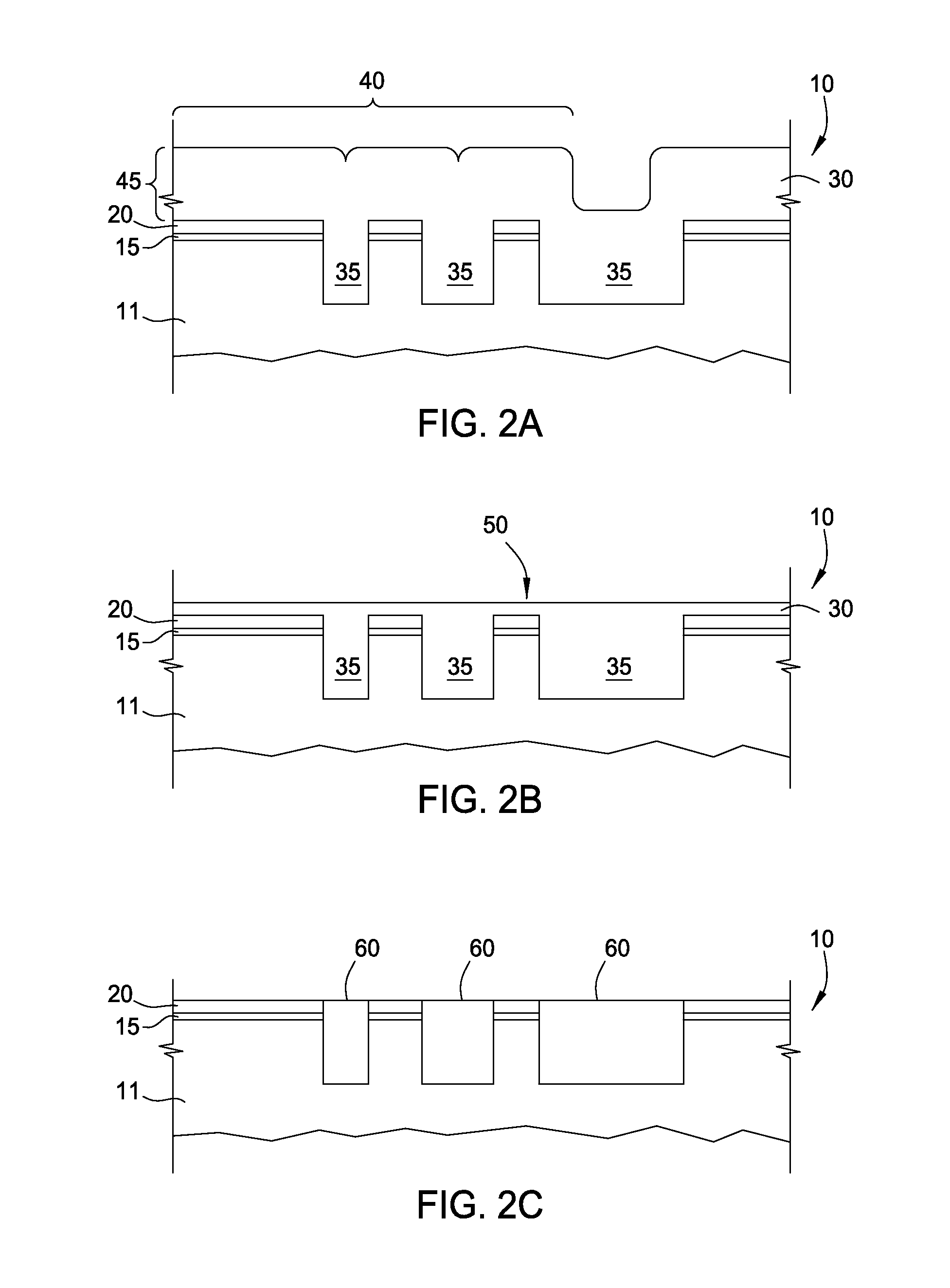Dynamic residue clearing control with in-situ profile control (ISPC)
a technology of in-situ profile control and residue clearing, which is applied in the direction of superfinishing machines, manufacturing tools, lapping machines, etc., can solve the problems that existing optical monitoring techniques may not meet the increasing demands of semiconductor device manufacturers, and it is not possible to determine the polishing endpoint merely
- Summary
- Abstract
- Description
- Claims
- Application Information
AI Technical Summary
Benefits of technology
Problems solved by technology
Method used
Image
Examples
Embodiment Construction
[0032]Implementations described herein generally relate to the monitoring and control of a chemical mechanical polishing process. The implementations described herein address the dynamic control of the residue clearing step of CMP processes such as shallow trench isolation (“STI”) and replacement metal gate (“RMG”) interlayer dielectric (“ILD”). Motor torque endpoint (“MT EP”) and dynamic in-situ profile control (“ISPC”) are currently used to control the bulk CMP polishing recipe prior to the residue clearing process. During the residue clearing process, the same bulk CMP polishing recipe is used to control the clearing process. Since ISPC typically targets a flat post profile before the clearing process begins, the ISPC pressures used during the bulk CMP polishing process tend to cause over-correction during the clearing process.
[0033]The implementations described herein provide several approaches for controlling the residue clearing process of the CMP polish. Dynamic ISPC is used ...
PUM
 Login to View More
Login to View More Abstract
Description
Claims
Application Information
 Login to View More
Login to View More - R&D
- Intellectual Property
- Life Sciences
- Materials
- Tech Scout
- Unparalleled Data Quality
- Higher Quality Content
- 60% Fewer Hallucinations
Browse by: Latest US Patents, China's latest patents, Technical Efficacy Thesaurus, Application Domain, Technology Topic, Popular Technical Reports.
© 2025 PatSnap. All rights reserved.Legal|Privacy policy|Modern Slavery Act Transparency Statement|Sitemap|About US| Contact US: help@patsnap.com



